Asteroid Belt: Definition, Location, Facts, Formation
The asteroid belt is a torus-shaped region of space between Mars and Jupiter. It spans approximately 140 million miles (225 million kilometers) in our solar system. The belt contains millions of asteroids and minor planets, ranging from small boulders to objects hundreds of miles across. The main asteroid belt measures about 100 million miles (160 million kilometers) wide.
The asteroid belt is located between Mars and Jupiter’s orbits. Asteroids in this belt orbit the Sun at distances of 140 million to 480 million kilometers. The inner edge starts at 2.2 astronomical units (AU) or 206 million miles from the Sun. The outer edge ends at3.2 AU or 300 million miles from the Sun.
Ceres is the largest asteroid in the belt with a diameter of 946 kilometers. The asteroid belt contains between 1 and 2 million asteroids larger than 1 kilometer in diameter. Asteroids in the belt orbit the Sun, taking 3 to 6 years to complete one orbit. The Dawn mission explored Vesta and Ceres in 2007, providing valuable insights into asteroid composition and geology.
The asteroid belt formed from the remains of a planet that never fully coalesced. Jupiter’s strong gravitational influence prevented the formation of a planet in the asteroid belt. Gravitational perturbations from Jupiter scattered asteroids and disrupted the merging of planetesimals. The belt became a chaotic region where objects collided and fragmented over time.
Asteroid belt composition includes rocky asteroids, icy asteroids, and metallic asteroids. Stony asteroids comprise 80-90%, made of silicate rocks and metals. Metallic asteroids constitute 5-10%, composed of iron and nickel. Icy asteroids make up 5-10%, containing water ice and frozen volatiles.
What is an asteroid belt?
Asteroid belt is a torus-shaped region of space between Mars and Jupiter, spanning approximately 140 million miles (225 million kilometers) in our solar system. The belt contains millions of asteroids and minor planets, ranging in size from small boulders to objects hundreds of miles across. Main asteroid belt measures about 100 million miles (160 million kilometers) wide and houses the majority of known asteroids. Gravity holds together the numerous rocky bodies occupying the asteroid belt, which orbits the Sun in a elliptical path. Scientists theorize the asteroid belt formed from remnants of a planet that never fully developed during the early stages of our solar system.
Asteroid belt orbits are elliptical, with an average distance of 2.2 astronomical units (AU) from the Sun. The closest point measures about 1.7 AU, while the farthest point reaches 3.2 AU. The asteroid belt area covers a vast expanse, spanning 140 million to 480 million kilometers in diameter. Asteroid belt composition includes rocky asteroids, icy asteroids, and metallic asteroids. Some asteroids represent remains of planetary cores, while others are fragments of larger objects destroyed in collisions.
The asteroid belt region occupies a distinct area of the solar system, separating the inner planets from the outer planets. Scientists sometimes refer to the asteroid belt as a ring due to its shape, although it is not a continuous structure. The asteroid belt system forms part of the larger solar system, interacting with neighboring planets through gravitational influences. Jupiter’s gravity plays a significant role in maintaining the stability of the asteroid belt and preventing the formation of a planet in this region.
Where is the asteroid belt located in our solar system?
The asteroid belt occupies a region between Mars and Jupiter’s orbits. Asteroids in this belt orbit the Sun at distances of 140 million to 480 million kilometers. The asteroid belt contains 99% of known asteroids in our solar system. Jupiter’s gravity influences the belt’s structure, preventing asteroids from moving closer to the Sun.
The main asteroid belt lies 2 to 4 times the Earth-Sun distance from the Sun. The inner edge starts at around 2.2 astronomical units (AU) or 206 million miles from the Sun. The outer edge ends at about 3.2 AU or 300 million miles from the Sun. The asteroid belt spans a distance of 140 million miles across.
Drawings of the Asteroid belt tend to be misleading. They often depict the asteroid belt as a dense, crowded region. The reality is that asteroids are spread out over a vast distance with many gaps and empty spaces. The asteroid belt contains between 1 and 2 million asteroids larger than 1 kilometer in diameter. Smaller objects range from tiny boulders to bodies hundreds of kilometers across.
Gravitational interactions with planets and other asteroids perturb asteroids into new orbits. This makes the asteroid belt a constantly evolving region. Jupiter’s strong gravity plays a significant role in shaping the belt’s structure. The asteroid belt remains a relatively stable and well-defined region despite these perturbations.
How far is the asteroid belt from the Sun?
The asteroid belt lies 2.2 to 3.2 astronomical units (AU) from the Sun. One AU equals the average Earth-Sun distance. The belt’s width measures approximately 1 AU, equivalent to 92 million miles or 150 million km. Asteroids’ elliptical orbits cause their distances from the Sun to vary between 1.8 AU and 4.5 AU.
The asteroid belt circles the Sun at an average distance of 2.7 au. The width of the asteroid belt itself measures 140 million miles (225 million kilometers). The belt contains millions of rocky and metallic objects orbiting the Sun. The average distance between asteroids in the main belt is estimated to be around 600,000 miles (966,000 km).
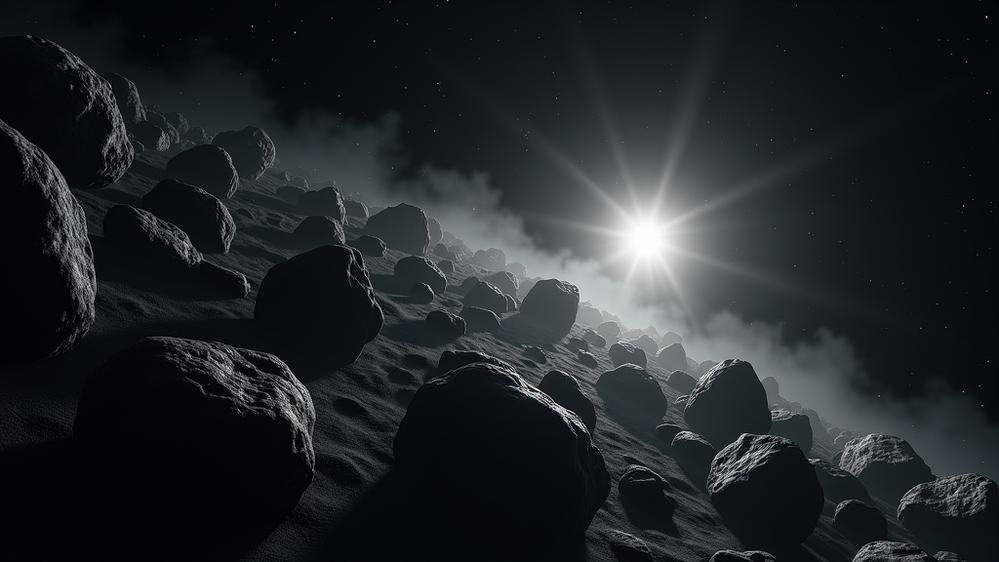
How many asteroid belts are in our solar system?
Our solar system contains three main asteroid belts. The main asteroid belt lies between Mars and Jupiter, spanning 140-480 million miles from the Sun. This belt contains over 1 million asteroids larger than 1 kilometer in diameter.
Three nested belts extend out to 14 billion miles from the Sun. The Kuiper Belt spans from 30 to 55 astronomical units (AU) from the Sun, containing hundreds of thousands of objects larger than 100 kilometers. The Oort Cloud extends from 2,000 to 100,000 AU from the Sun, housing trillions of objects larger than 1 kilometer.
The asteroid belts formed 4.6 billion years ago from leftover material during solar system formation. The main asteroid belt lies in a region where Jupiter’s gravity prevented planet formation. Each asteroid belt has unique characteristics and compositions, providing clues about the solar system’s early formation.
What are the interesting facts about the asteroid belt?
The interesting facts about the asteroid belt are listed below.
- Location of the asteroid belt: The asteroid belt is located between Mars and Jupiter, spanning a region from 2.2 to 3.2 astronomical units from the Sun.
- Millions of asteroids: Millions of asteroids exist within the asteroid belt, ranging from small boulders to large objects.
- The largest asteroids: Ceres is the largest asteroid with a diameter of 946 kilometers. Other notable large asteroids in the belt include Vesta, Pallas, and Hygiea.
- Diversity of asteroids: Asteroids in the belt vary greatly in size, from a few meters to hundreds of kilometers across.
- Density of the asteroid belt: The asteroid belt is not crowded, with an average distance of 1 million kilometers between asteroids.
- Shape of the asteroid belt: The asteroid belt has a disc-shaped structure with a thickness of about 1 million kilometers.
- Star-like appearance: Asteroids have a star-like appearance when viewed from Earth due to their small size and lack of atmosphere.
- Discovery of the asteroid belt: Italian astronomer Giuseppe Piazzi discovered the asteroid belt in 1801 when he spotted Ceres.
- Asteroid orbits: Asteroids in the belt orbit the Sun, taking 3 to 6 years to complete one orbit.
- Lack of atmosphere:Asteroids lack a significant atmosphere due to their small size and weak gravity.
- The Dawn mission: The Dawn mission explored Vesta and Ceres in 2007, providing valuable insights into asteroid composition and geology.
How did the asteroid belt form?
Astronomers believe the asteroid belt formed from the remains of a planet that never fully coalesced. Material from the solar nebula began forming small bodies over time. These bodies broke apart, creating asteroids of various sizes. The asteroid belt spans 140 million miles, containing objects from small boulders to large bodies like the 590-mile-diameter Ceres.
Jupiter’s strong gravitational influence prevented the formation of a planet in the asteroid belt. Gravitational perturbations from Jupiter scattered asteroids and disrupted the merging of planetesimals. The asteroid belt became a chaotic region where objects collided and fragmented over time.
The asteroid belt exists as a collection ofobjects between Mars and Jupiter. Asteroids are rocky and metallic in nature. Objects in the belt range from tiny pebbles to bodies hundreds of miles across. The belt spans 140 million km in width and measures 1.5 AU in thickness.
Jupiter’s gravity helped shape the asteroid belt. Jupiter captured some asteroids as temporary moons and ejected others from the solar system. Many asteroids remained in stable orbits around the Sun, continuing to collide and evolve over billions of years.
The asteroid belt contains an estimated 1-2 million asteroids larger than 1 kilometer in diameter. Countless smaller objects populate the region, representing remnants of the early solar system. The belt provides valuable insights into the processes that shaped planetary formation and early solar system history.
Did a large terrestrial planet ever form in the region of the asteroid belt?
A large terrestrial planet never formed in the asteroid belt region. Jupiter’s massive gravitational influence prevented planet formation in this area during the early solar system. Jupiter scattered or accreted material, leaving only smaller bodies like dwarf planet Ceres and numerous asteroids. The asteroid belt contains rocky and metallic bodies between Mars and Jupiter’s orbits.
Jupiter’s gravitational influence prevented larger bodies from forming in the asteroid belt. The giant planet’s gravity disrupted the terrestrial planet accretion process, scattering material and preventing accumulation. Simulations show Jupiter’s presence led to the depletion of material in the asteroid belt through gravitational interactions.
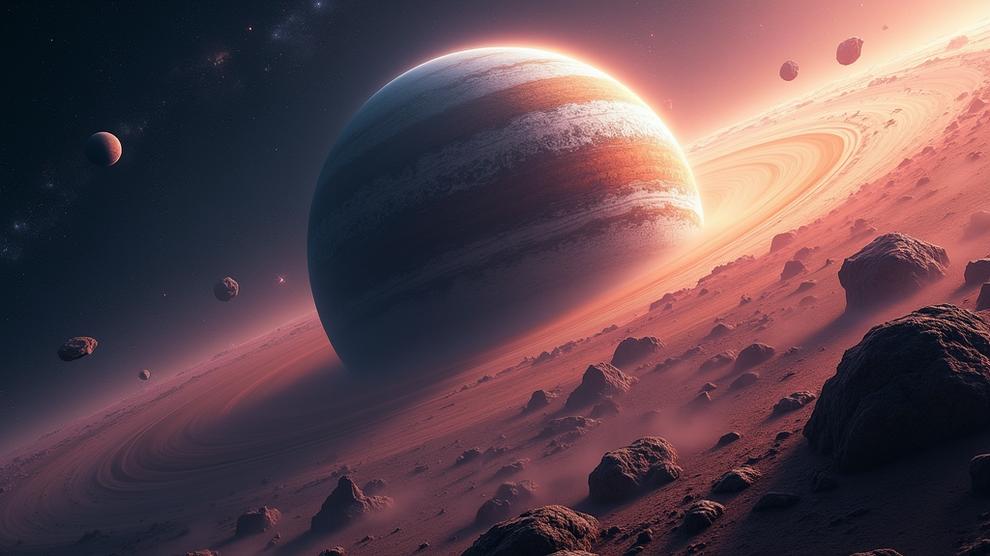
Terrestrial planet embryos may have once formed in the asteroid belt region. Some planetesimals in the belt likely grew into small planetary embryos during the early stages of solar system formation. Vesta, a large asteroid 530 kilometers in diameter, could be the remnant of a destroyed planetary embryo.
Terrestrial planet simulations suggest the asteroid belt could have produced planets 2-3 times Earth’s mass with radii of 10,000-15,000 km. Other studies indicate the potential for planets up to 5-6 Earth masses with radii of 15,000-20,000 km. The hypothetical “Planet V” proposed by some researchers would have been 2,000-3,000 kilometers in diameter, located 2-3 AU from the Sun.
Why didn’t a planet form where the asteroid belt is now located?
Asteroid belt contains insufficient mass to form a planet, possessing only 4 percent of the moon’s mass in asteroids. Jupiter’s gravitational influence prevented material condensation into a single body. Scientists estimate belt mass by monitoring Mars and Earth orbits. Researchers counted tiny asteroids to calculate total mass, confirming inadequate material for planet formation.
Objects in the belt have average orbital velocities of 20 kilometers per second, making stable orbits necessary for planetary formation challenging. Jupiter’s mass, 318 times that of Earth, caused orbital perturbations in the asteroid belt. These perturbations led to collisions and fragmentation of objects rather than accretion.
Jupiter kept the asteroid belt close to its current configuration. The gas giant’s gravitational influence sterilized the asteroid belt region, preventing an Earth-sized planet from forming. Jupiter likely ejected or destroyed larger planets that may have existed in the asteroid belt in the past. Simulations suggest the belt once contained more substantial bodies before Jupiter’s interference.
Is the asteroid belt a destroyed planet?
Asteroid belt is not a destroyed planet. Astronomers confirm it represents remnants of the early solar system. Jupiter’s gravitational influence prevented planet formation in this region. Asteroid belt consists of small rocky objects orbiting the Sun. These objects are remains from a protoplanetary disk that never coalesced into a planet.
Asteroid belt formation occurred through a combination of gravitational forces and collisions. Small, rocky bodies called planetesimals were left over after the formation of larger planets. These planetesimals became the building blocks of the current asteroid belt. The total mass of the asteroid belt is only a tiny fraction of a full-fledged planet’s mass, estimated at about 4% of the Moon’s mass.
Asteroid belt collision events have played a role in shaping the current state of the belt. Impacts between asteroids create debris and contribute to the fragmentation of larger bodies. The irregular shapes of most asteroids indicate they never coalesced into a spherical body, further supporting the theory that the belt is not a destroyed planet.
The Asteroid belt theory proposes that the belt represents failed planet formation rather than the remnants of a destroyed world. The “planetary differentiation” hypothesis suggests that Jupiter’s gravitational influence prevented the material in the asteroid belt region from fully forming into a planet. Scientists estimate the asteroid belt contains between 1 and 2 million asteroids larger than 1 kilometer in diameter.
Asteroid belt science has provided evidence against the “destroyed planet” theory. The low total mass in the belt and the lack of a compelling mechanism to completely shatter and disperse a planet support this conclusion. Spectroscopy and radar astronomy techniques have been used to study the composition and structure of asteroids, providing valuable insights into their origins.
Asteroid belt fragments range in size from a few meters to hundreds of kilometers in diameter. Ceres, the largest object in the asteroid belt, has a diameter of approximately 950 kilometers. The presence of these diverse sizes supports the idea of gradual fragmentation rather than a catastrophic planetary destruction event.
Will the asteroid belt become a planet?
Asteroid belt will not become a planet. Asteroid belt lacks sufficient mass for planet formation. Asteroid belt’s total mass equals only 4% of Moon’s mass. Jupiter’s close proximity and massive gravity prevent large body formation in asteroid belt. Mass belt consists of many small asteroids orbiting Sun between Mars and Jupiter. Researchers study asteroid belt’s unique composition and structure.
Asteroid belt formation occurred 4.6 billion years ago during the early stages of solar system development. The solar nebula hypothesis explains how the asteroid belt formed from leftover material not incorporated into planets. Jupiter’s massive gravity disrupted large planet formation in the asteroid belt region. Jupiter’s gravitational influence caused planetesimals to collide and break apart rather than merge and grow.
The asteroid belt contains between 1 and 2 million asteroids larger than 1 kilometer in diameter. The asteroid belt is a stable region of space containing numerous rocky and metallic objects. Asteroids orbit the Sun in a relatively stable manner between Mars and Jupiter. These asteroids are spread over a vast region, making it difficult for them to collide and merge into planets.
Asteroid belt planet formation through mergers is improbable. The average asteroid velocity is 20 kilometers per second, exceeding the escape velocity from a planet’s surface. Colliding asteroids would likely break apart or be ejected rather than merging. Asteroid mergers require enormous energy, which would likely dissipate as heat, radiation, or kinetic energy.
What is an asteroid belt made of?
Asteroid belt contains diverse asteroids. Stony asteroids comprise 80-90%, made of silicate rocks and metals. Metallic asteroids constitute 5-10%, composed of iron and nickel. Icy asteroids make up 5-10%, containing water ice and frozen volatiles. Asteroid belt material resembles Earth’s crust. Belt includes 1-2 million asteroids larger than 1 kilometer in diameter.
Rocky asteroids made of silicate materials like feldspar, pyroxene and olivine make up 75% of the asteroid belt. Clay silicate rocks are present in some asteroids, indicating past interaction with water. Iron-magnesium silicates are common in many asteroids, formed through cooling and solidification of magma.
Metallic iron asteroids account for 2% of the belt’s population. About 8% of asteroids are composed of nickel-iron, with up to 90% iron content in some cases.
Icy bodies comprise 5% of asteroids. These are primarily composed of water ice and frozen volatiles. Organic material-rich asteroids make up less than 1% of the belt, containing carbon-rich compounds of interest to astrobiologists.
The asteroid belt originated from planetesimals formed during the early solar system. These small, rocky bodies never coalesced into a planet due to Jupiter’s gravitational influence. Some scientists theorize the asteroid belt contains remains of a destroyed planet, though this is less widely accepted.
The asteroid belt lies between 2.2 and 3.2 astronomical units (AU) from the Sun. Most asteroids are located between 2.5 and 3.0 AU. The belt spans over 140 million kilometers in diameter, containing an estimated 1 to 2 million asteroids larger than 1 kilometer.
What are the four largest asteroids in the asteroid belt?
The four largest asteroids in the asteroid belt are listed below.
- Ceres: Largest asteroid with a diameter of 946 km (588 miles), classified as a dwarf planet, constitutes about 30% of the belt’s total mass, discovered in 1801.
- Vesta: Second-largest asteroid with a diameter of 530 km (329 miles), highly cratered surface, mass is 2.59 x 10^23 kilograms.
- Pallas: Third-largest asteroid with a diameter of 560 km (348 miles), highly inclined orbit, thought to be a remnant protoplanet, mass is 2.11 x 10^23 kilograms.
- Hygiea: Fourth-largest asteroid with a diameter of 434 km (270 miles), carbonaceous asteroid, considered one of the oldest objects in the asteroid belt, mass is 8.85 x 10^22 kilograms.
Ceres, Vesta, Pallas, and Hygieacomprise about 60% of the asteroid belt’s total mass. Ceres alone accounts for one-third of the belt’s mass.
What are the asteroids in the asteroid belt made of?
Asteroids in the asteroid belt are composed of diverse materials. Rocky substances predominate, especially in the main belt. Iron-nickel metals occur in small portions. Silicate rocks and clay are found in remaining asteroids. Distant asteroids contain more ices. Inner asteroids consist mostly of rock with minor iron-nickel content. This composition reflects the solar system’s early formation 4.6 billion years ago.
S-type (stony) asteroids make up 65% of all asteroids. These asteroids contain silicate materials, rock, and stone. S-type asteroids are rich in calcium, aluminum, and iron. Some S-type asteroids contain small amounts of nickel.
Metallic asteroids compose 10% of the asteroid population. These asteroids contain primarily iron (85%) and nickel (10%). Metallic asteroids contain small amounts of cobalt and chromium. Examples of metallic asteroids in the belt include 16 Psyche and 21 Lutetia.
C-type (carbonaceous) asteroids make up 15% of all asteroids. These asteroids contain carbon-rich materials, organic compounds, water, and volatile substances. C-type asteroids are found in the outer asteroid belt.
Some asteroids contain ices like water, ammonia, and methane. Icy asteroids are relatively rare in the asteroid belt. Icy asteroids play a role in delivering water and organic compounds to the inner solar system.
Asteroids in the belt range from a few meters to hundreds of kilometers in diameter. Asteroids orbit the Sun at a distance of 2.2 to 3.2 astronomical units (AU). The asteroid belt contains 1-2 million asteroids larger than 1 kilometer in diameter.
How much gold is in the asteroid belt?
The asteroid belt contains an estimated 400 tons of gold based on average abundance. Scientists calculate this figure using an average gold concentration of 200 parts per billion in asteroids. Gold concentrations in asteroids vary widely, ranging from a minimum of 0.4 parts per billion to a maximum of 1000 parts per billion in rare, gold-rich asteroids. A hypothetical maximum of 2.4 million tons of gold would exist if all asteroids in the belt were gold-rich. The total value of gold in the asteroid belt is estimated at $700 quintillion at current market prices. Asteroid belt gold represents a significant potential resource for future space exploration and mining endeavors. Space mining companies and researchers are actively exploring possibilities for extracting these valuable resources from asteroids.
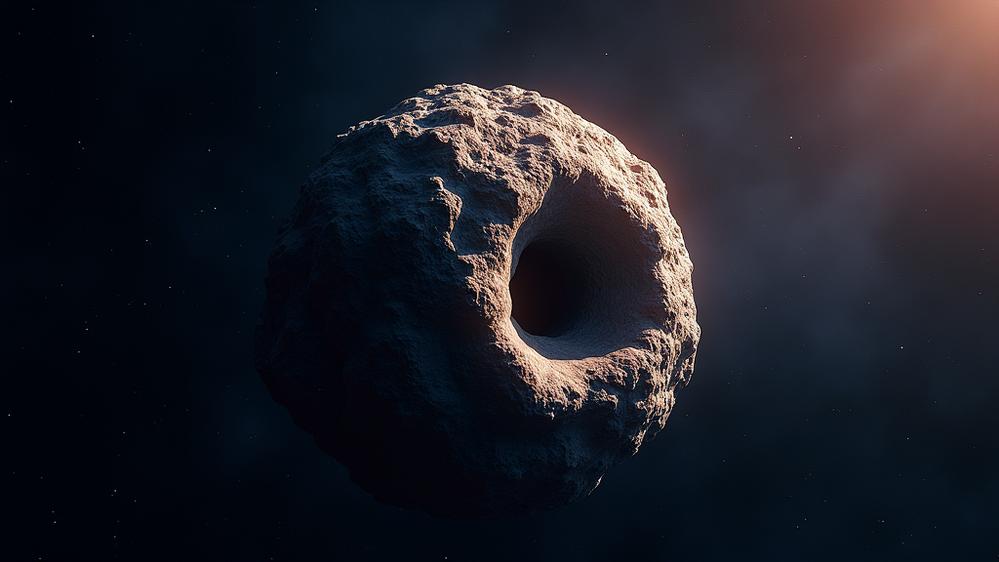
What is the major difference between the asteroid belt and the Kuiper belt?
Kuiper belt objects have much larger sizes, with diameters up to 2,374 km, compared to asteroid belt objects less than 1,000 km. The Kuiper belt contains massive objects like dwarf planets such as Pluto. Kuiper belt objects are composed largely of ices, while asteroid belt objects consist of silicates, rocks, and metals.
Size and mass vary between the two belts. The asteroid belt contains 1-2 million objects larger than 1 kilometer, with Ceres, the largest asteroid, measuring 946 kilometers in diameter. The Kuiper belt holds hundreds of thousands of objects larger than 100 kilometers, including dwarf planets like Pluto with a diameter of 2,374 kilometers. The asteroid belt’s total mass is 4% of the Moon’s mass. The Kuiper belt possesses 10-20 times more mass than the asteroid belt.
Temperature differences between the asteroid belt and the Kuiper belt vary due to their respective distances from the Sun. The asteroid belt experiences temperatures ranging from -100°C to 20°C. The Kuiper belt endures much colder temperatures, from -233°C to -173°C. These temperature variations result in distinct compositions and characteristics of objects within each belt.
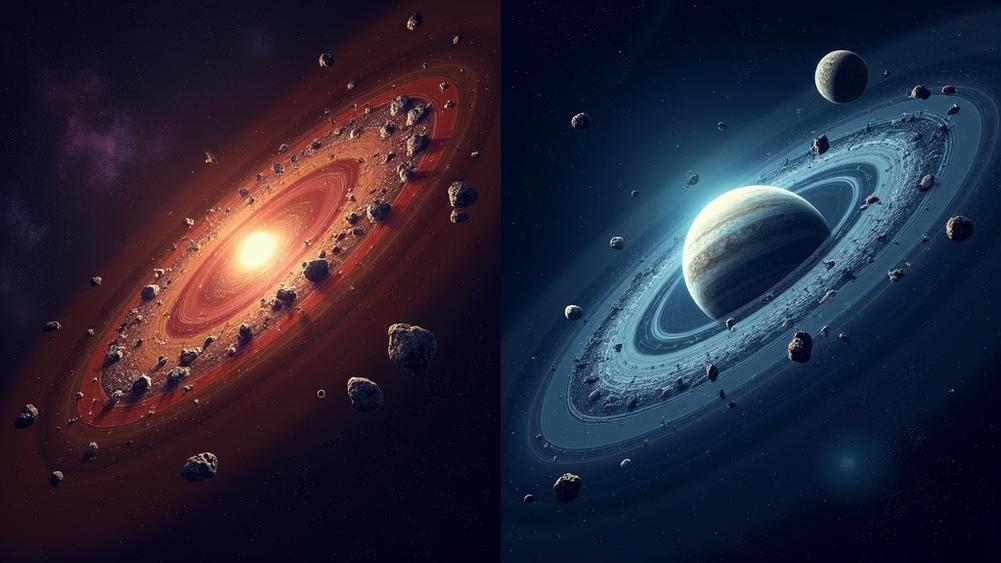
What planets are inside and outside the asteroid belt?
The planets that are inside and outside the asteroid belt are listed below.
- Inner Planets (Inside the Asteroid Belt): Mercury, Venus, Earth, Mars
- Outer Planets (Outside the Asteroid Belt): Jupiter, Saturn, Uranus, Neptune
- Dwarf Planet Beyond Neptune: Pluto
The asteroid belt separates inner and outer planets. Mercury, Venus, Earth, and Mars orbit inside the belt as terrestrial inner planets. Jupiter, Saturn, Uranus, and Neptune orbit outside as gas giant outer planets. Inner planets are of a dense and rocky composition, while outer planets have a primarily gassy composition. Asteroid belt spans 2.2 to 3.2 AU from Sun. Inner planets orbit closer than 1.52 AU. Outer planets orbit beyond 5.2 AU.
How far is the asteroid belt from Earth?
The asteroid belt exists at a distance of approximately 329 million kilometers from Earth. Astronomers measure space distances using Astronomical Units (AU). Earth’s elliptical orbit causes variations in this distance. The asteroid belt’s closest edge, marked by Ceres, orbits at 2.88 AU or 430 million kilometers from the Sun.
The distance between Earth and the asteroid belt varies depending on the positions of both in their orbits. The asteroid belt’s closest approach to Earth is over 93 million miles away. Asteroids within the belt are separated by vast distances, with an average spacing of around 965,000 kilometers (600,000 miles) between objects. The asteroid belt contains millions of rocky bodies ranging in size from small boulders to objects hundreds of kilometers in diameter.
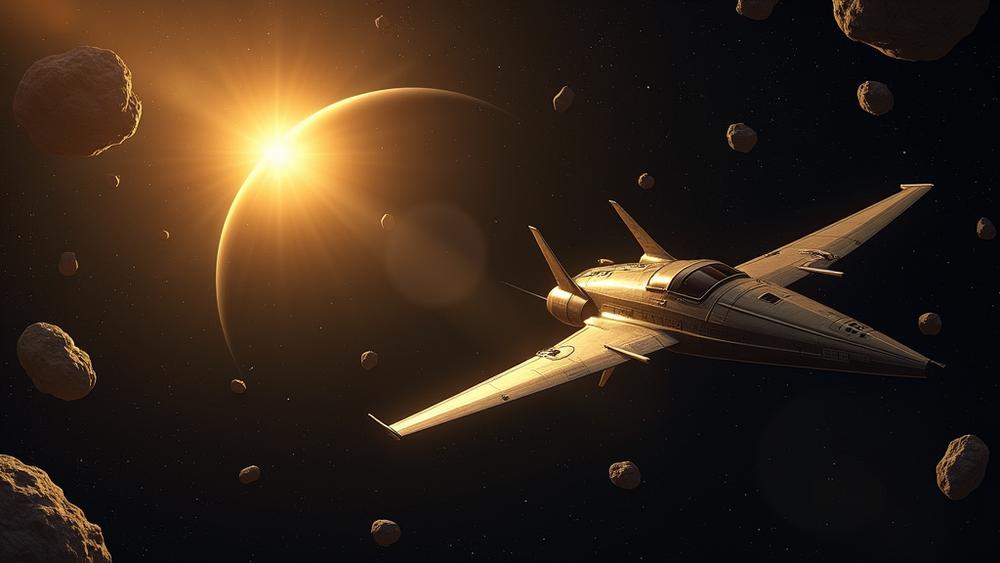
Can you see the asteroid belt from Earth?
Asteroid belt remains invisible to naked eyes from Earth. Vesta, brightest asteroid, becomes visible every 5.34 years during opposition. Large asteroids like Vesta and Hygiea can be observed using binoculars or telescopes. Ceres, Vesta, Pallas, and Hygiea are the four largest asteroids. Most asteroids are small, requiring powerful telescopes for observation.
Telescopes are necessary to observe the asteroid belt. Amateur telescopes with 10-15 cm diameter can detect larger asteroids like Ceres, Vesta, and Pallas. Professional observatories use powerful telescopes to study the asteroid belt in detail.
Individual asteroids appear as tiny points of light in the night sky. The asteroid belt covers a large sky area, appearing as a diffuse region without a discernible “belt” structure. Observers see the asteroid belt best in certain constellations when the Sun is below the horizon.
Asteroid belt brightness ranges from magnitude 6 to 20. Most asteroids are too small and dim for easy observation, reflecting minimal sunlight. Astronomers use visual observations, astrometry, and photometry to study asteroids in the belt.
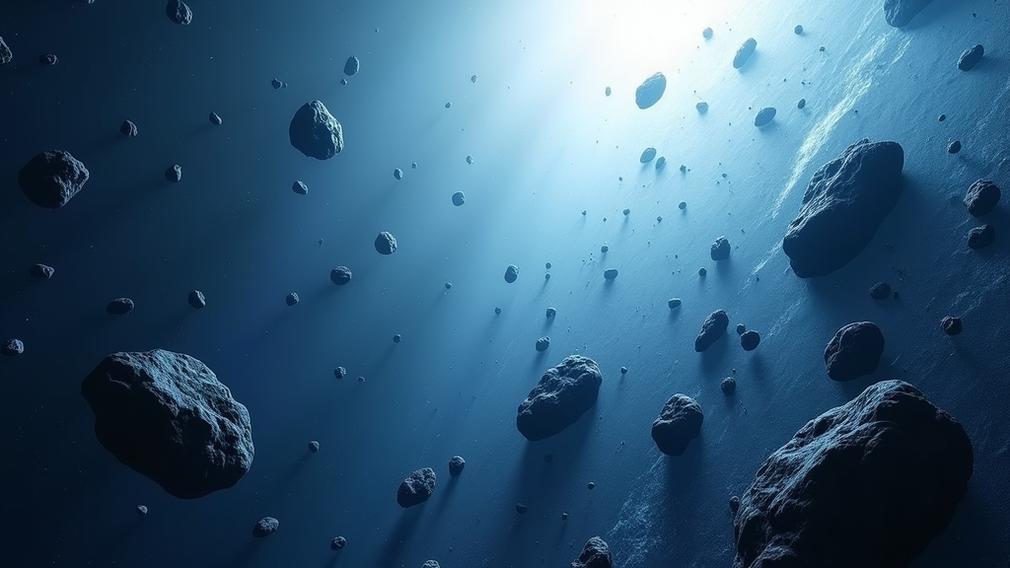
The asteroid belt contains millions of rocky, metallic, and icy bodies. Ceres is the largest asteroid at 950 km diameter. Asteroid belt orbits range from 2 to 5 astronomical units from the Sun, with an average distance of 2.5 AU.
Where can you find the asteroid belt?
The asteroid belt occupies a region of space between Mars and Jupiter in the solar system. Asteroids in the belt span 2.2 to 3.2 astronomical units from the Sun. The belt contains 90-95% of all known asteroids. Asteroids range from meters to hundreds of kilometers in size. Ceres, the largest, measures 946 kilometers in diameter.
The asteroid belt marks the boundary between the inner rocky planets and outer gas giants. It contains between 1 and 2 million asteroids larger than 1 kilometer in diameter, with estimates suggesting up to 200 million asteroids larger than 100 meters. The largest objects in the belt include the dwarf planet Ceres and the asteroids Vesta, Pallas, and Hygiea.
The gravitational influences of Mars and Jupiter help maintain the orbits of asteroids. Asteroids in the belt orbit within a stable region of the solar system. Most asteroids are found within 200 million to 300 million kilometers from the Sun, with the majority orbiting within 30 degrees of the solar system’s plane.
How can asteroids be distinguished from stars in telescope observations?
Asteroids exhibit relative motion against background stars over time. Astronomers track asteroid positions across multiple nights. Asteroids appear as faint, point-like objects in telescopes, different from stars. Long-exposure images show asteroids as streaks. Light curves of asteroids are more irregular than stars. Motion analysis, visual appearance, and light patterns distinguish asteroids from stars in telescope observations.
Comparing positions of celestial objects over time reveals changes in asteroid locations. Astronomers take images of the same sky region at different intervals. Image comparison identifies objects that have shifted position relative to the fixed stars. Asteroid trails appear as short streaks of light in telescope images. Star images remain sharp points without trails.
Systematic sky surveys detect moving objects in specific regions. Researchers track these objects to determine their orbital paths. Angular velocity measurements quantify asteroid motion, in arcseconds per hour. Asteroid 1 Ceres, the largest object in the asteroid belt, has an angular velocity of 0.5 arcseconds per hour. Orbital periods for asteroids are measured in days or years. 1 Ceres completes its orbit in about 4.6 years.
How far apart are asteroids in the asteroid belt?
Asteroid belt spans 140 million miles between Mars and Jupiter. Average distance between asteroids is 600,000 miles (965,000 km). Outer belt asteroids are separated by 1.2 million miles (1.9 million km). Close encounters occur at 100,000 miles (160,000 km). Distances vary significantly due to planetary gravitational influences.
Asteroids range in size from the size of boulders to objects hundreds of kilometers wide. The asteroid belt spans from 2.2 to 3.2 astronomical units from the Sun. General spacing estimates between asteroids extend to several million kilometers. Asteroids orbit the Sun at varying distances within this expansive region.
The asteroid belt contains 1-2 million asteroids larger than 1 km across a width of 1 million km. Asteroids are not densely packed in the belt. Collisions between asteroids are unlikely due to their vast spacing. Some regions like Kirkwood gaps have larger distances between asteroids. Other areas such as asteroid clusters have smaller distances between asteroids.
How big are the asteroids in the asteroid belt?
Asteroids in the belt range from 1 meter to 945 km in diameter. Largest bodies include Ceres (945 km), Pallas (560 km), and Vesta (530 km). Average diameter is 1-2 km. Majority (80%) measure less than 1 km. Size distribution follows a power-law curve. Larger asteroids (>100 km) are likely intact, primitive bodies.
Asteroids like Vesta, Pallas, and Hygiea can extend up to 250 miles (400 km) in length. Over 200 known asteroids have a minimum diameter of 100 km. Scientists estimate that 1.1-1.9 million asteroids have a minimum diameter of 1 kilometer (0.6 miles). Asteroids with a diameter of at least 1 km are considered significant in terms of their potential impact and scientific interest.
How many asteroids are in the asteroid belt?
The asteroid belt contains approximately 100-200 million asteroids. 1.8 million asteroids are larger than 1 km in diameter. 18-30 million asteroids measure between 100 meters and 1 km. Over 1 billion asteroids are smaller than 100 meters. 90% of known asteroids reside in the belt between Mars and Jupiter.
Astronomers have officially discovered and cataloged approximately 7,000 asteroids. The actual number of asteroids in the belt likely exceeds current estimates. New surveys and space missions continually identify additional asteroids. The vast, diffuse area of the asteroid belt complicates precise counting efforts.
What is the combined mass of all the asteroids in the asteroid belt?
The combined mass of all asteroids in the asteroid belt is estimated at 2.39 x 10^21 kilograms or 239 trillion metric tons. This mass represents approximately 3% of the Moon’s mass and less than 1% of Mercury’s mass. The four largest asteroids – Ceres, Vesta, Pallas, and Hygiea – account for about 50% of the total mass.
Ceres, the largest object, accounts for 39% of the total asteroid belt mass. The four largest objects in the belt contain 62% of the total mass. Most individual asteroids have negligible masses compared to these larger bodies. Vesta, Pallas, and Hygiea contribute significantly to the overall mass alongside Ceres.
Asteroids provide valuable insights into solar system formation and evolution despite their relatively small combined mass. Planetary gravitational influences affect asteroid orbits and distribution within the belt.
When was the asteroid belt discovered?
Italian astronomer Giuseppe Piazzi discovered the asteroid belt on January 1, 1801. Piazzi identified Ceres, the first object in the asteroid belt, now classified as a dwarf planet. The discovery of Ceres marked the beginning of asteroid belt studies. Subsequent discoveries of other asteroids solidified the concept of an asteroid belt between Mars and Jupiter. Over 1 million known asteroids exist in the belt, with scientists expecting many more to be discovered.
Who discovered the asteroid belt?
Giuseppe Piazzi discovered Ceres, the first asteroid belt object, in 1801. Ceres is now classified as a dwarf planet. Multiple astronomers contributed to the asteroid belt’s conceptualization. Johann Elert Boda proposed its existence in 1772. The belt took shape as a distinct solar system region in the early 19th century.
Johann Titius played a role in predicting the existence of the asteroid belt in 1766. Titius developed a mathematical pattern for planetary orbits, known as the Titius-Bode law. The law suggested a gap between Mars and Jupiter where another planet should exist.
Heinrich Olbers discovered the second asteroid, Pallas, in 1802. Olbers proposed the asteroid belt theory after observing multiple small objects in the region between Mars and Jupiter. His discoveries, along with those of other astronomers, revealed the existence of numerous small bodies in this area.
The asteroid belt orbits the Sun between Mars and Jupiter. Asteroids in the belt have orbits between 2.2 and 3.2 astronomical units from the Sun. Millions of asteroids populate the belt, ranging in size from a few meters to hundreds of kilometers across.
What does the asteroid belt look like?
Asteroid belt appears as a vast, doughnut-shaped region between Mars and Jupiter. Space contains millions of rocky bodies called asteroids. Asteroids range from meters to hundreds of kilometers in diameter. Belt spans 140-480 million kilometers wide and 1 AU thick. Density decreases farther from Sun. Ceres measures 946 kilometers, largest in belt.
Visual characteristics of the asteroid belt include a spread-out appearance that is difficult to see with the naked eye. The belt resembles a vast, diffuse expanse of space containing numerous dots representing small rocky objects. Most asteroids have odd, lumpy shapes resembling potatoes with pitted or cratered surfaces. Spherical asteroids are rare in the belt, with only the largest objects like Ceres having a spherical shape. Asteroids revolve around the Sun in elliptical orbits, creating an irregularly shaped distribution within the belt.
The overall appearance of the asteroid belt resembles a rotating lawn sprinkler pattern. Asteroid belt diagrams depict this pattern with scattered objects spread out in a wide, circular arrangement. The belt contains bands of dust and debris, thought to be remnants of collisions and larger object breakups. Asteroid belt images and pictures show these dust bands, providing insight into the dynamic environment of the region. The asteroid belt’s visual characteristic is one of complexity and diversity, with a vast array of objects spread out across a wide, torus-shaped region of space.
What color is the asteroid belt?
The asteroid belt lacks a distinct color. Belt consists largely of empty space. Individual asteroids display varied hues. Rocky asteroids appear gray or brown. Metallic asteroids like 16 Psyche look silver. Organic-rich asteroids such as 24 Themis exhibit reddish tones. Ceres, largest asteroid, shows water ice mixed with darker material.
What is the asteroid belt called?
The asteroid belt is known as the Main Asteroid Belt. The asteroid belt occupies space between Mars and Jupiter’s orbits, spanning 2.2 to 3.2 astronomical units from the Sun. Asteroid belt contains millions of rocky bodies ranging from meters to hundreds of kilometers in diameter. Ceres, the largest asteroid, measures 950 km across.
How big is the asteroid belt?
The asteroid belt spans a massive region between Mars and Jupiter. Asteroid belt width measures approximately 480 million kilometers (300 million miles). Asteroid belt diameter equals about 1.5 astronomical units (AU). Asteroid belt location averages 2.2 AU from the Sun. Asteroid belt mass equals roughly 4% of the Moon’s mass.
Millions of small rocky objects populate the asteroid belt, with sizes ranging from a few meters to hundreds of kilometers in diameter. Scientists estimate the belt contains between 1 and 2 million asteroids larger than 1 kilometer in diameter. The largest object in the asteroid belt is the dwarf planet Ceres. The density of objects varies throughout the belt’s expanse, creating a complex and diverse region of our solar system.
Is the asteroid belt a sphere?
The asteroid belt is not a sphere. Asteroid belt forms a torus-shaped region between Mars and Jupiter, spanning 2.2 to 3.2 AU from the Sun. Asteroid belt contains many small rocky bodies orbiting in a thin, irregularly shaped ring of space. Asteroid belt’s complex structure differs from uniform spherical shells depicted in illustrations.
The asteroid belt disk has a thickness of 1 astronomical unit. Scientists describe the asteroid belt shape as torus-like or annulus-shaped. The main asteroid belt is 140 million kilometers wide. Researchers measure the asteroid belt thickness at 1 million kilometers.
The asteroid belt disk is tilted relative to the ecliptic plane. The asteroid belt disk has an inclination of 7 degrees to the ecliptic. Kirkwood gaps create a ring-like structure within the asteroid belt. The asteroid belt is located between 2.2 and 3.2 astronomical units from the Sun.
Asteroids within the belt are irregularly shaped rocky bodies. Most asteroids in the belt have an irregular shape. Large asteroids like Ceres have spherical shapes due to their gravity. Astronomers estimate the asteroid belt contains millions of objects larger than 1 kilometer. The asteroid belt is a dynamic region with colliding and fragmenting objects.
How old is the asteroid belt?
The asteroid belt is approximately 4.567 billion years old. Studies, including a 2019 Nature Astronomy publication, estimate its age at 4.56 billion years. The belt formed shortly after the solar system’s birth, within 10-100 million years. Its age aligns with the solar system’s formation from the original solar nebula.
Most asteroids in the belt are estimated to be around 4.5 billion years old. These ancient objects provide valuable insights into the early composition of our solar system. Some asteroid families are much younger, with ages as recent as 1.1 million years or less. The Karin family of asteroids has been dated to 90 million years old. Asteroid families are groups of asteroids sharing similar orbital characteristics, likely originating from the same parent body.
Collisions, gravitational interactions, and solar radiation effects continually shape the asteroid belt. The age range of asteroids in the belt demonstrates its dynamic nature. Astronomers determine the ages of asteroids and asteroid families through radiometric dating of meteorites and studying orbital dispersions. The asteroid belt remains an active area of research, with ongoing discoveries revealing new information about its complex history and structure.

